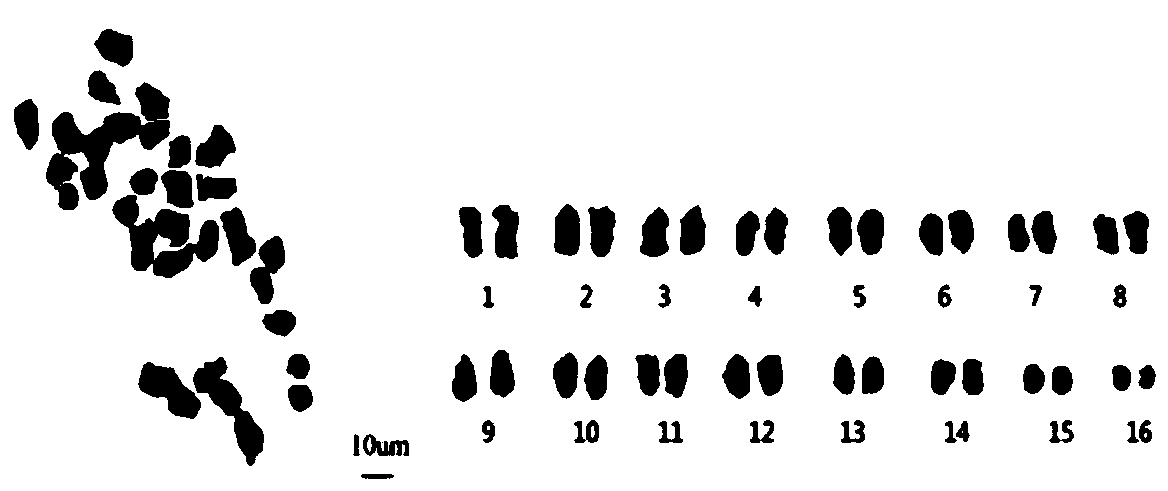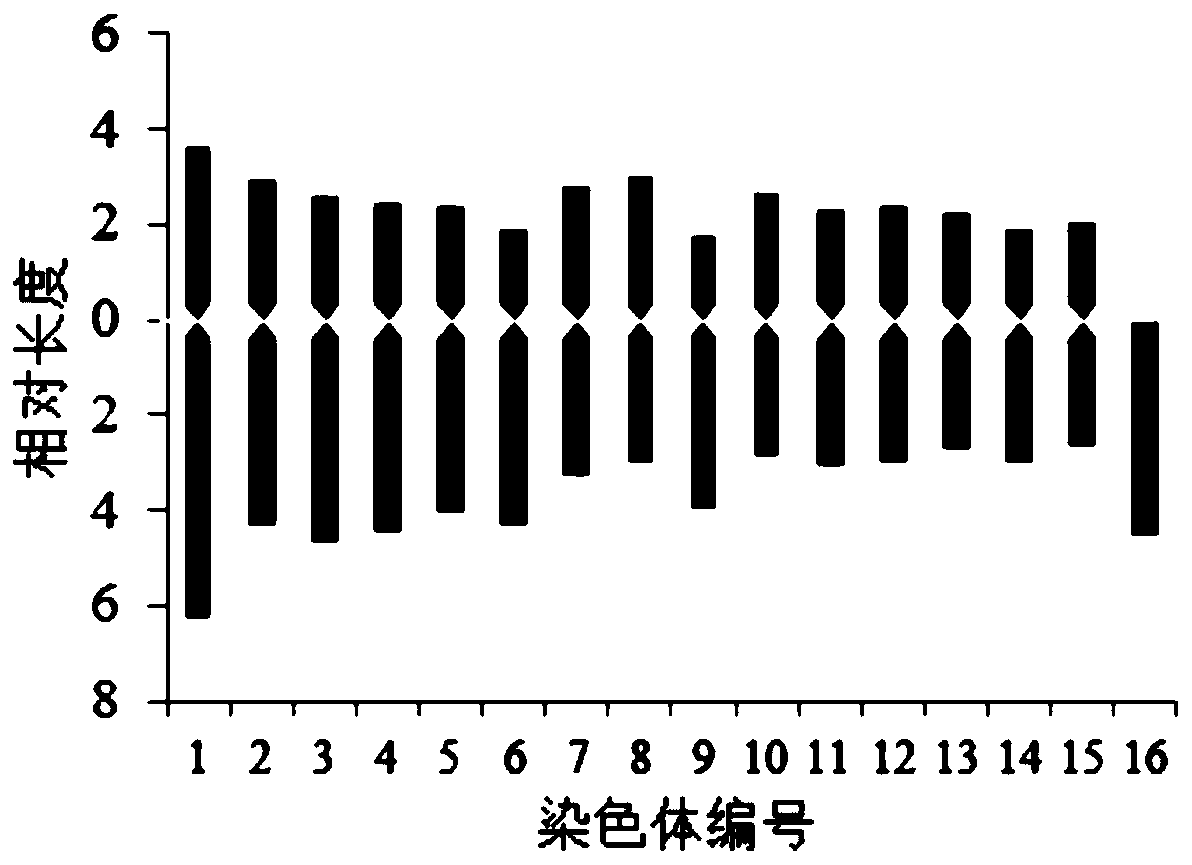Apocarya chromosomal karyotype analysis method
A technology of pecan shell and chromosome karyotype, which is applied in the direction of analyzing materials, material analysis by optical means, measuring devices, etc., can solve the problems of complicated operation, poor tableting effect, and poor mobility, etc.
- Summary
- Abstract
- Description
- Claims
- Application Information
AI Technical Summary
Problems solved by technology
Method used
Image
Examples
Embodiment 1
[0029] In this embodiment, the karyotype analysis of the chromosomes of 'Boni' thin-shell pecans is carried out, which specifically includes the following steps:
[0030] Step S1. material collection: in fine weather, at 8:00 in the morning, get the side buds of the 'Pony' shell pecan plant;
[0031] Step S2. Pretreatment: Treat the collected lateral buds with 0.01% colchicine at 4°C in a light-shielding environment for 4 hours;
[0032] Step S3. Fixing: put the pretreated lateral buds into Carnot's fixative (V 95%无水乙醇 :V 冰乙酸 =3:1) fixed for 24h;
[0033] Step S4. Dissociation: Pour off the fixative, and heat dissociation with 1mol / L hydrochloric acid in a 60°C water bath for 8 minutes;
[0034] Step S5. Staining: transfer the material to a glass slide, and stain with carbo fuchsin solution for 2 hours;
[0035] Step S6. Pressing: place the stained material and the glass slide on absorbent paper, cover the cover glass with tweezers, drive away the air bubbles, and disperse...
Embodiment 2
[0041] In this embodiment, the karyotype analysis of the 'Mahan' pecan chromosome is carried out, which specifically includes the following steps:
[0042] Step S1. taking materials: in fine weather, at 7:30 in the morning, get the side buds of the 'Mahan' thin shell pecan plant;
[0043] Step S2. Pretreatment: Treat the collected lateral buds with an equal-volume mixture of 0.01% colchicine + 2 mmol 8-hydroxyquinoline at 4°C in a light-shielding environment for 4 hours;
[0044] Step S3. Fixing: put the pretreated lateral buds into Carnot's fixative (V 95%无水乙醇 :V 冰乙酸 =3:1) fixed 26h;
[0045] Step S4. Dissociation: Pour off the fixative, and heat dissociation with 1mol / L hydrochloric acid in a 60°C water bath for 9 minutes;
[0046] Step S5. Staining: transfer the material to a glass slide, and stain with carbo fuchsin solution for 2 hours;
[0047] Step S6. Pressing: place the stained material and the glass slide on absorbent paper, cover the cover glass with tweezers, d...
Embodiment 3
[0053] In this embodiment, the karyotype analysis of the 'Jinhua' pecan chromosome is carried out, which specifically includes the following steps:
[0054] Step S1. taking materials: in fine weather, at 8:45 in the morning, get the top buds of 'Jinhua' thin-shell hickory;
[0055] Step S2. Pretreatment: Treat the collected terminal buds with an equal volume mixture of 0.01% colchicine + 2 mmol 8-hydroxyquinoline at 4°C in a light-shielding environment for 5 hours;
[0056] Step S3. fix: the terminal bud after pretreatment is put into Carnot's fixative (V 95%无水乙醇 :V 冰乙酸 =3:1) fixed for 24h;
[0057] Step S4. Dissociation: Pour off the fixative, and use 1mol / L hydrochloric acid in a 60°C water bath to dissociate for 7 minutes;
[0058] Step S5. Staining: transfer the material to a glass slide, and stain with carbo fuchsin solution for 2 hours;
[0059] Step S6. Pressing: place the stained material and the glass slide on absorbent paper, cover the cover glass with tweezers, ...
PUM
 Login to View More
Login to View More Abstract
Description
Claims
Application Information
 Login to View More
Login to View More - R&D
- Intellectual Property
- Life Sciences
- Materials
- Tech Scout
- Unparalleled Data Quality
- Higher Quality Content
- 60% Fewer Hallucinations
Browse by: Latest US Patents, China's latest patents, Technical Efficacy Thesaurus, Application Domain, Technology Topic, Popular Technical Reports.
© 2025 PatSnap. All rights reserved.Legal|Privacy policy|Modern Slavery Act Transparency Statement|Sitemap|About US| Contact US: help@patsnap.com



